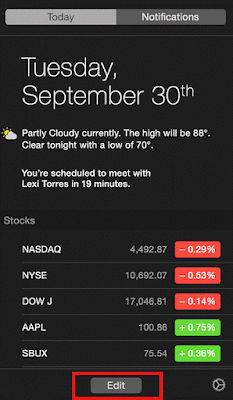

The list of available widgets will then be displayed in the center.

Open the notification center (see above) then click on the “Edit widgets” button at the bottom.

To view your widgets, simply click the date or time at the top right of the screen, or swipe left from the right edge of the trackpad with two fingers. In 2021, macOS Monterey keeps the same widgets. They are still located in the notification center, but they now come in 3 different sizes so that you can choose the layout that suits you best. This version introduces new wigdgets, that are completely different from the ones you might see in previous versions of macOS. In addition to my stalwart Microsoft Office 2011-installed with a license of, ahem, questionable origin-my list of 32-bit programs also includes a line item for “Dashboard Widgets.” No one, including Apple, wanted to gut and renovate their widgets for the 64-bit future.At the end of 2020, Apple released a major new version of its operating system: macOS Big Sur. Apple helpfully points out those programs for you in its System Information menu.

Once you upgrade, any program that hasn't made the jump will break for good and refuse to launch. MacOS Catalina took the final step, dropping support for 32-bit applications. A few years ago, Apple began transitioning away from 32-bit applications in favor of 64-bit software that takes better advantage of modern, high-performance processors. I guess I see why Dashboard had to go, alas. And the tools you use to get through the day, however flawed or idiosyncratic they may be, take on a pleasant intimacy as tangible extensions of your mind. (There's a perfectly good macOS Dictionary app, for example.) But sometimes routines become part of your interior life. All of the tools were readily available to me in a number of other equally convenient or perhaps superior formats. I’m not trying to convince you that my constant Dashboarding was particularly smart or efficient.


 0 kommentar(er)
0 kommentar(er)
